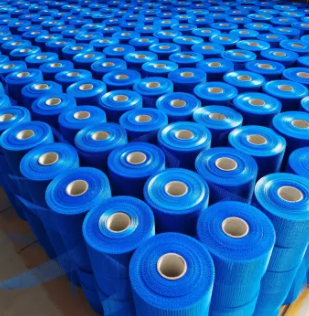When it comes to creating smooth, seamless walls in construction, the process of taping drywall joints is a fundamental step that should not be overlooked. Taping serves as more than just a finishing touch; it plays a crucial role in ensuring the stability, appearance, and longevity of the walls.

1. Ensuring Structural Integrity:
1.1 Joint Reinforcement:
Taping drywall joints is essential for reinforcing the joints between individual sheets of drywall. These joints, where two pieces of drywall meet, are vulnerable points that need proper reinforcement to prevent cracks and ensure structural stability.
1.2 Preventing Joint Movement:
Taping not only reinforces joints but also helps in preventing joint movement over time. Without proper taping, changes in temperature and settling of the building can lead to joint cracks, compromising the integrity of the wall.
2. Achieving a Smooth Surface:
2.1 Seamless Appearance:
2.2 Eliminating Visible Joints:
Untaped drywall joints are prone to developing visible seams, especially under certain lighting conditions. Taping conceals these joints, creating a visually appealing surface with minimal to no visible seams.
3. Minimizing Joint Shrinkage:
3.1 Joint Compound Compatibility:
Taping provides a surface for joint compound application, ensuring a strong bond between the joint compound and the drywall. This bond helps minimize joint shrinkage as the compound dries, preventing the development of cracks over time.
Additional reading:
Mechanical Parts & Fabrication Services
What is medical injection molding?How to Order Volute Spring at Discounted Price?What are the top 10 tips for purchasing cylindrical gears online?5 Essential Front Loader Attachments to Simplify Your WorkAre disc springs worth the investment for B2B purchases?Unleashing Performance: The Power of Custom Reducer Gears3.2 Long-Term Stability:
Taping, when combined with joint compound and proper finishing techniques, contributes to the long-term stability of the drywall installation. It creates a durable surface that resists the effects of settling, temperature changes, and other factors that can impact the integrity of the joints.
4. Essential Taping Techniques:
4.1 Paper or Mesh Tape:
Paper tape or fiberglass mesh tape is commonly used for taping drywall joints. The choice between the two depends on factors such as personal preference, specific project requirements, and the type of joint being taped.
4.2 Joint Compound Application:
5. Professional Finish:
5.1 Skilled Craftsmanship:
5.2 Quality Assurance:
6. Conclusion: A Non-Negotiable Step:
Taping drywall joints is not just a recommended step; it is a non-negotiable requirement in the drywall installation process. The benefits of reinforcement, seamless appearance, and long-term stability make taping an essential component in achieving professional and durable results. Whether for residential, commercial, or industrial projects, investing the time and effort into proper taping techniques ensures that the finished walls stand the test of time, providing a solid foundation for subsequent finishes and maintaining the overall quality of the construction.
Recommended article:How do telescopic forks work?7 Essential Tips for Disc Spring Safety SystemsSay goodbye to scratches! Discover how disc washers can revive your old CDs and DVDsUltimate Guide: Beveled Washer Dimensions and VariationsWhat are gate valves used in industry?Why do people choose deep groove ball bearing?What Materials Are Used for Injection Molding?



Comments
All Comments (0)
Related Articles
How Often Should You Replace Weather Stripping
Weather stripping is an often overlooked but crucial component of your home's insulation and energy efficiency. It serves as a barrier between the interior and exterior, preventing air leaks, drafts, and moisture infiltration.
By CC
335
0
0
Boat Winch Maintenance and Care: Tips for Longevity and Performance
Boat winches are essential tools for boat owners, aiding in various tasks such as anchoring, docking, and launching. To ensure these vital components continue to function optimally and have a long lifespan, it's crucial to perform regular maintenance and proper care.
By May
333
0
0
Cast Aluminium Gate Q&A: Elevating Style and Security
Cast aluminium gates have gained popularity as a stylish and durable option for enhancing the security and aesthetics of residential and commercial properties.
By CC
332
0
0
What Does Surface Finishing Process Include?
Surface finishing is a crucial step in the manufacturing and production of various products across industries. It involves a series of techniques and processes aimed at enhancing the appearance, functionality, and durability of materials and products. The surface finishing process is highly diverse, encompassing a wide range of methods to achieve specific desired results.
By Hou
365
0
0
Understanding the Function and Benefits of Belleville Disc Springs
Belleville disc springs, often referred to simply as disc springs or conical spring washers, are a versatile and indispensable component in various engineering applications. These compact, conical-shaped springs play a crucial role in ensuring the proper functioning of numerous mechanical systems across industries.
By May
306
0
0
How does a universal joint work?
The invention of universal joints dates back many centuries. Even though the universal joint’s mechanism seems simple, the physics behind this mechanism are rather complicated and interesting.
By CC
366
0
0
Which is better CV joints or universal joints?
The choice between constant velocity (CV) joints and universal joints (U-joints) depends on the specific application and requirements. Both types of joints serve different purposes and have distinct advantages and disadvantages.
By Hou
350
0
0
Where is tyre coupling used?
Tyre couplings, also known as tire couplings, are flexible couplings used in various industrial applications to connect two shafts and transmit torque while accommodating some degree of misalignment and shock absorption. They are characterized by a tire or elastomeric element that acts as the flexible component within the coupling.
By Hou
363
0
0